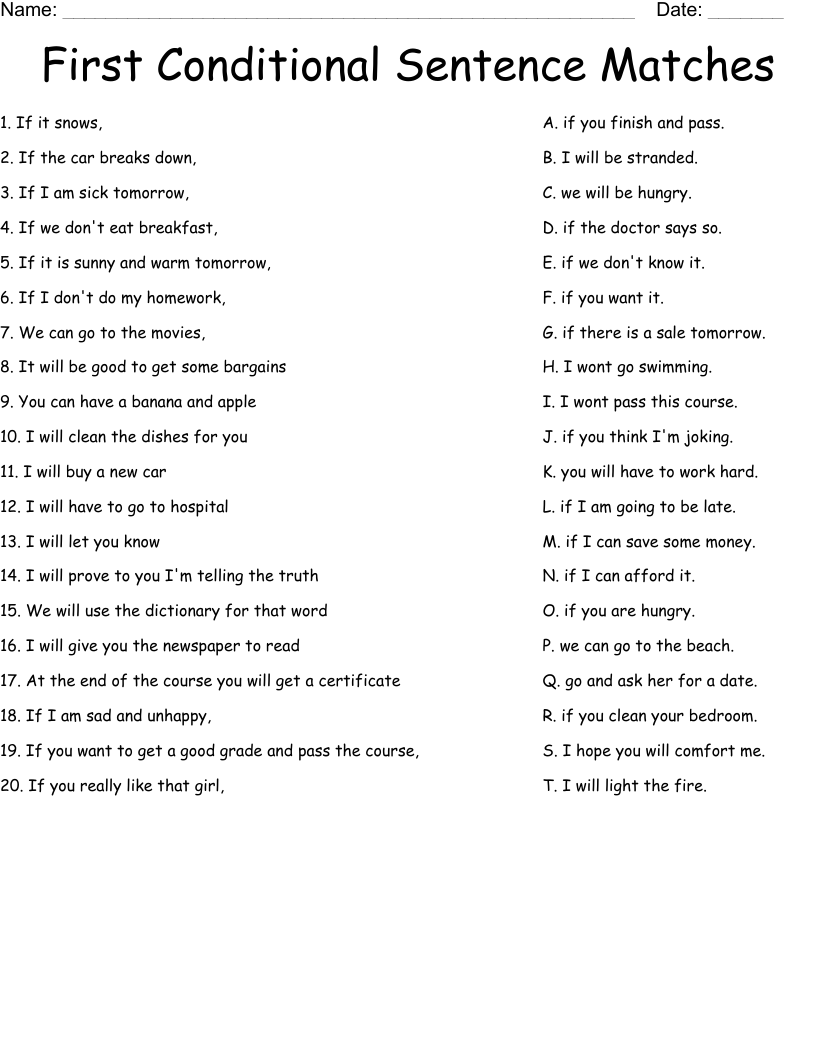Conditional sentences are used to express a hypothetical situation and its consequences. These sentences consist of an if clause, which presents the condition, and a main clause, which describes the result of that condition. There are different types of conditional sentences, each with its own structure and usage.
One common type of conditional sentence is the first conditional, which is used to talk about possible future events and their likely outcomes. This type of conditional sentence is formed with “if” followed by a present simple verb in the if clause and “will” + base form of the verb in the main clause.
Example of a Conditional Sentence:
If it rains tomorrow, I will bring an umbrella.
In this example, the if clause presents the condition (rain tomorrow) and the main clause describes the result of that condition (bringing an umbrella). The first conditional is often used to make plans or predictions about the future based on certain conditions.
Another type of conditional sentence is the second conditional, which is used to talk about hypothetical or unlikely situations and their consequences. This type of conditional sentence is formed with “if” followed by a past simple verb in the if clause and “would” + base form of the verb in the main clause.
If I won the lottery, I would travel the world.
In this example, the if clause presents a hypothetical situation (winning the lottery) and the main clause describes the result of that situation (traveling the world). The second conditional is often used to express dreams, wishes, or unlikely events.
Overall, conditional sentences are a useful tool for expressing hypothetical situations and their outcomes. By understanding the different types of conditional sentences and their structures, you can effectively convey various ideas and scenarios in your writing and speech.
